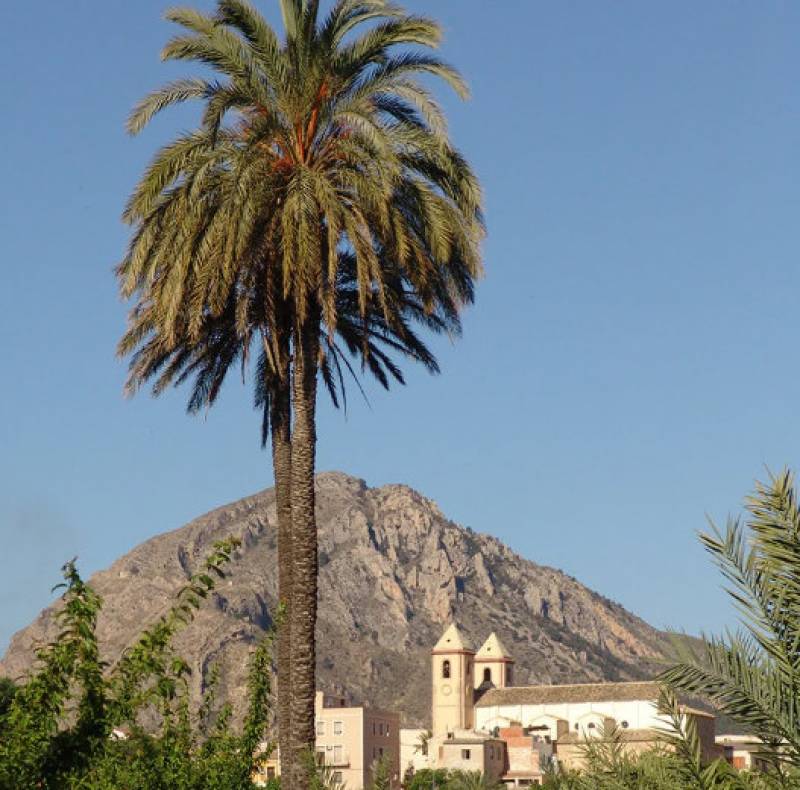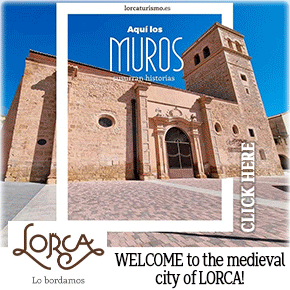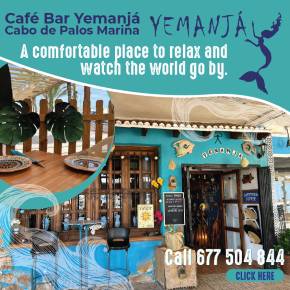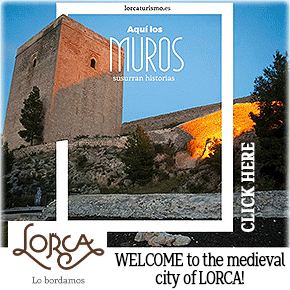- Region
- Águilas
- Alhama de Murcia
- Jumilla
- Lorca
- Los Alcázares
- Mazarrón
- San Javier
-
ALL AREAS & TOWNS
- AREAS
- SOUTH WEST
- MAR MENOR
- MURCIA CITY & CENTRAL
- NORTH & NORTH WEST
- TOWNS
- Abanilla
- Abarán
- Aguilas
- Alamillo
- Alcantarilla
- Aledo
- Alhama de Murcia
- Archena
- Balsicas
- Blanca
- Bolnuevo
- Bullas
- Cañadas del Romero
- Cabo de Palos
- Calasparra
- Camping Bolnuevo
- Campo De Ricote
- Camposol
- Canada De La Lena
- Caravaca de la Cruz
- Cartagena
- Cehegin
- Ceuti
- Cieza
- Condado de Alhama
- Corvera
- Costa Cálida
- Cuevas De Almanzora
- Cuevas de Reyllo
- El Carmoli
- El Mojon
- El Molino (Puerto Lumbreras)
- El Pareton / Cantareros
- El Raso
- El Valle Golf Resort
- Fortuna
- Fuente Alamo
- Hacienda del Alamo Golf Resort
- Hacienda Riquelme Golf Resort
- Isla Plana
- Islas Menores & Mar de Cristal
- Jumilla
- La Azohia
- La Charca
- La Manga Club
- La Manga del Mar Menor
- La Pinilla
- La Puebla
- La Torre
- La Torre Golf Resort
- La Unión
- Las Palas
- Las Ramblas
- Las Ramblas Golf
- Las Torres de Cotillas
- Leiva
- Librilla
- Lo Pagan
- Lo Santiago
- Lorca
- Lorquí
- Los Alcázares
- Los Balcones
- Los Belones
- Los Canovas
- Los Nietos
- Los Perez (Tallante)
- Los Urrutias
- Los Ventorrillos
- Mar De Cristal
- Mar Menor
- Mar Menor Golf Resort
- Mazarrón
- Mazarrón Country Club
- Molina de Segura
- Moratalla
- Mula
- Murcia City
- Murcia Property
- Pareton
- Peraleja Golf Resort
- Perin
- Pilar de la Horadada
- Pinar de Campoverde
- Pinoso
- Playa Honda
- Playa Honda / Playa Paraíso
- Pliego
- Portmán
- Pozo Estrecho
- Puerto de Mazarrón
- Puerto Lumbreras
- Puntas De Calnegre
- Region of Murcia
- Ricote
- Roda Golf Resort
- Roldan
- Roldan and Lo Ferro
- San Javier
- San Pedro del Pinatar
- Santiago de la Ribera
- Sierra Espuña
- Sucina
- Tallante
- Terrazas de la Torre Golf Resort
- Torre Pacheco
- Totana
- What's On Weekly Bulletin
- Yecla


- EDITIONS:
 Spanish News Today
Spanish News Today
 Alicante Today
Alicante Today
 Andalucia Today
Andalucia Today
7 of the spookiest haunts in the Region of Murcia
Locations to send chills down your spine even in the heat of the Costa Cálida summer!
The Region of Murcia is renowned for its sunshine, the warmth of its climate and its people, the good living and the delicious food, but even the Costa Cálida has its darker, colder side…
1. The Sanatorium of Sierra Espuña
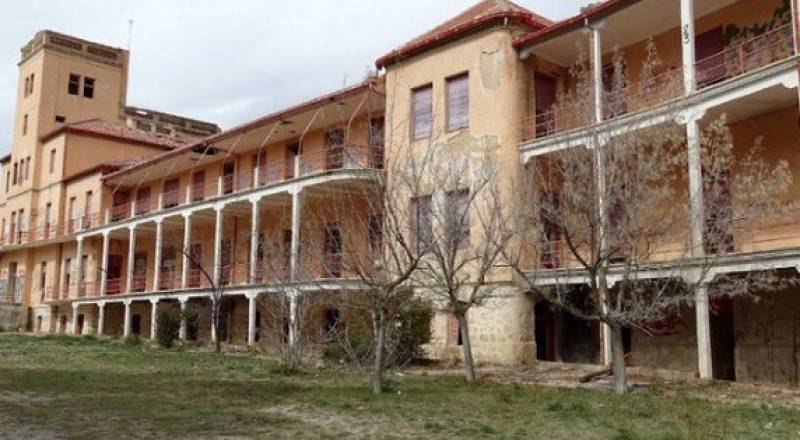 Throughout the western world in the early years of the 20th century many sanatoria were built to house and treat orphans, people suffering from mental illnesses and those with tuberculosis, and many of them have been the focus of eerie stories since they fell into disuse.
Throughout the western world in the early years of the 20th century many sanatoria were built to house and treat orphans, people suffering from mental illnesses and those with tuberculosis, and many of them have been the focus of eerie stories since they fell into disuse.
One of these was the Sanatorio de Sierra Espuña, which was built in the mountains of Alhama de Murcia in 1913 to offer a rest cure for sufferers of TB. In 1963 it became an orphanage and then later on a youth hostel, but its doors were closed in 1995 and it has remained empty since (despite plans announced in 2019 to convert it into a hotel).
During the intervening years, though, the sanatorium has been surrounded by rumours of a paranormal nature, with various unexplained sounds and sightings of ghostly figures in the building itself and the weeds around it. Reports include the experiences of guests at the youth hostel, who were terrified by doors opening and closing “on their own”, and the reputation of the building would surely make any hotel chain think twice before venturing into business here!
The sanatorium is close to the village of El Berro, in the foothills of Sierra Espuña.
2. Hostal del Cónsul in La Unión
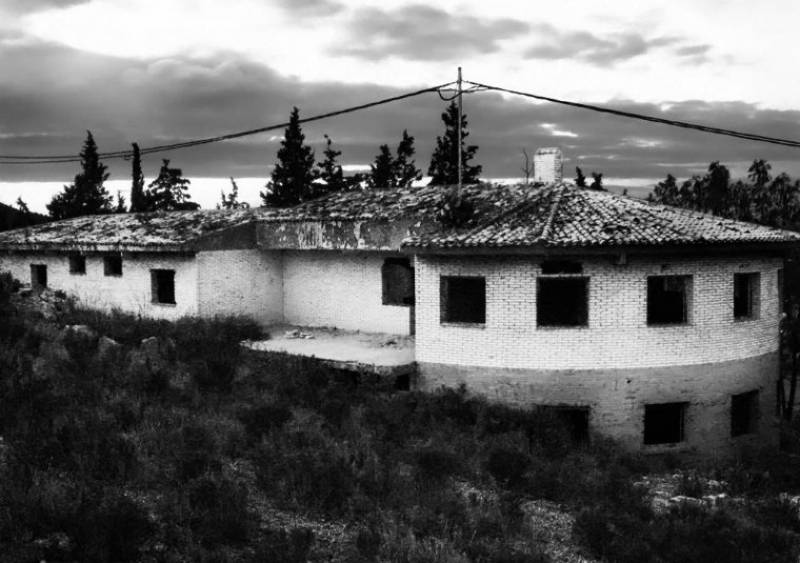 The town of La Unión in south-eastern Murcia has plenty of interesting sights for visitors to see. A long and rich mining history made it an important settlement in Roman times and brought another burst of prosperity at the end of the 19th century, leaving behind important architecture, the annual Cante de las Minas festival which is famous throughout the world of flamenco, and the spectacular monument to crass greed which is the Bay of Portmán, still half full of the sterile mining waste which completely clogged up the natural harbour in the early 20th century.
The town of La Unión in south-eastern Murcia has plenty of interesting sights for visitors to see. A long and rich mining history made it an important settlement in Roman times and brought another burst of prosperity at the end of the 19th century, leaving behind important architecture, the annual Cante de las Minas festival which is famous throughout the world of flamenco, and the spectacular monument to crass greed which is the Bay of Portmán, still half full of the sterile mining waste which completely clogged up the natural harbour in the early 20th century.
But the more recent history of the town was marked by the events of 27th March 1982, well after the last mines closed. The owner of the Hostal del Cónsul, Alfonso Martínez Saura, was brutally stabbed 63 times in the cafeteria of the premises, and when the body was found he was still clasping human hair in his hand, evidence of the struggle which had presumably preceded his death.
Despite all the evidence, though, investigations drew a complete blank, and not even the murder weapon was ever found. Furthermore, the authorities concluded that the hostel was fully closed at the time of the killing, and that Alfonso was alone inside!
Even if the killer had been locked in with his victim, there was no escape route from the scene of the crime!
Evidence gathered from locals in subsequent days revealed that for some time the owner had been joking with customers about “ghosts” who had been ringing the bell and then disappearing, and this has led various investigators of paranormal phenomena to the building. Spookily, some report having found “misty silhouettes” inside and “shadows” wandering close by, while other “ghostbusters” claim to have made eerie electronic voice recordings…
The hostel is easy to find, standing alongside one of the exits on the motorway between Cartagena and the Mar Menor (click for map).
3. The Castillo de los Vélez in Mula
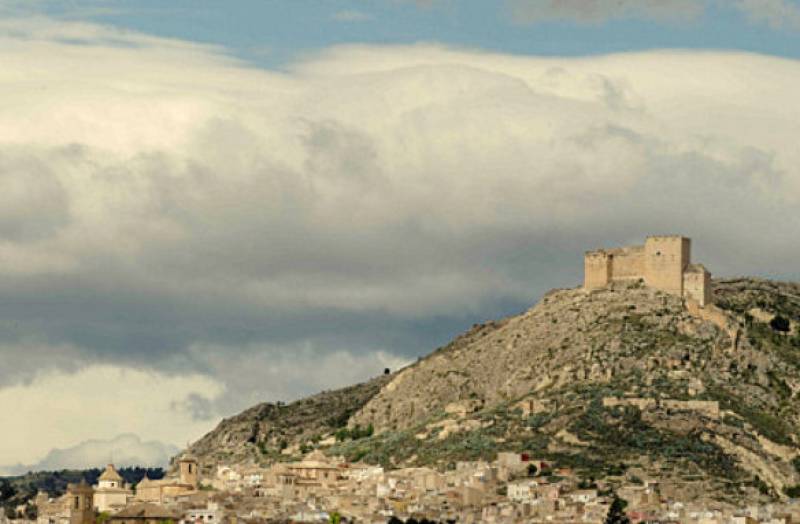 Arguably the most iconic of the many historic buildings in Mula, the Castillo de los Vélez has stood above the town since it was first built in the 16th century, although now, sadly, it is not possible to enter as urgent restoration work is needed to make it safe to do so.
Arguably the most iconic of the many historic buildings in Mula, the Castillo de los Vélez has stood above the town since it was first built in the 16th century, although now, sadly, it is not possible to enter as urgent restoration work is needed to make it safe to do so.
The aims of building the tower were to protect the surrounding land from the threat of Moorish incursions and uprisings and to reinforce the power of the ruling Vélez family, but the fortress is also said to have witnessed tragedy. The first case concerns a young girl who fell to her death in a well inside one of the towers, while as recently as 2013 another girl was injured when she fell 10 metres.
Paranormal investigations have followed, and there are photographs which some maintain show dark figures and the outline of a child’s body inside the castle. Electronic voice recordists claim to have captured the phrases “Silence, murderer!” and “Kill!”.
4. The curse of the Teatro Romea in Murcia
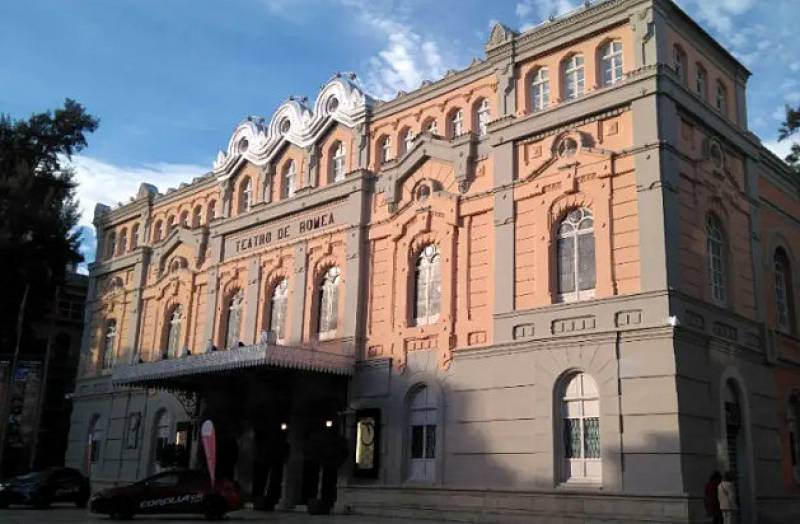 The Teatro Romea in the centre of the city of Murcia is one of the oldest and most important still in regular use in Spain, but the first few years of its history were plagued by a series of misfortunes which led many to believe it was cursed!
The Teatro Romea in the centre of the city of Murcia is one of the oldest and most important still in regular use in Spain, but the first few years of its history were plagued by a series of misfortunes which led many to believe it was cursed!
The theatre opened on 25th October 1862, but its initial success was short-lived. On 7th February 1877 the evening performance included fireworks, and the following morning at around midday the theatre was ablaze, almost certainly due to a slow-burning remnant of the evening performance. Not until two days later were the flames extinguished, by which time the building had been completely gutted, and a total reconstruction was needed. This was overseen by the architect Justo Millán.
On 10th December 1899, though, disaster struck again. The evening’s program had been reorganized to include a performance of “Jugar con Fuego” (Playing with Fire), and when the audience saw what appeared to be a flash of lightning while the orchestra was playing the prelude, they assumed it to be a part of the production. This wasn’t the case, though, and the directors of the performance had to plead for calm while the orchestra played on. The atmosphere soon turned to panic as the curtain fell down in flames, and everyone suddenly hurried to the exits. Tragically one young man lost his life in the blaze, and it was reported that a woman died two days later from the shock she had suffered.
Ever since these fires some have believed that the theatre is under a curse, and the theory gained support when in 1910 the roof caved in, probably due to the haste with which the building had been reconstructed following the second fire. This led to some calling for the building to be demolished but instead, it was repaired again, reopening soon afterwards.
Alarmingly, the threat of a third fire still hangs over the building. When the land for the theatre was expropriated it is said that the curse foretold three fires, and that in the last of them, with a full house, all of those inside would perish. For this reason, the theatre always leaves one or two seats unsold, so that the prophecy cannot come true.
You have been warned!
5. The White Lady of the Castillo de la Concepción in Cartagena
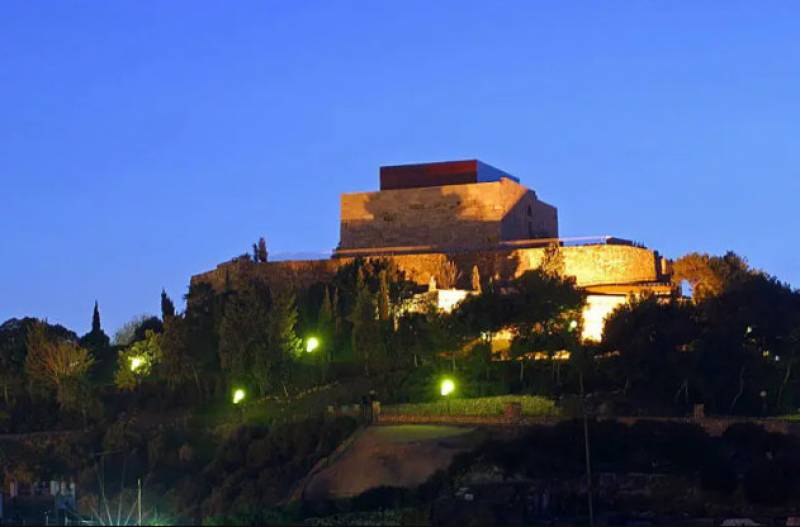 The Castillo de la Concepción is a 13th or 14th century fortress on the hill known as the Cerro de la Concepción in Cartagena, one of the five hills which dominated the isthmus on which the city still stood at the time when the fortification was built.
The Castillo de la Concepción is a 13th or 14th century fortress on the hill known as the Cerro de la Concepción in Cartagena, one of the five hills which dominated the isthmus on which the city still stood at the time when the fortification was built.
It was built using stone blocks which had originally formed part of the structures in the Roman city of Carthago Nova, some of them taken from the Roman amphitheatre, and is considered such an emblem of the city that it is represented in Cartagena’s coat of arms.
Right from its early days, though, it has been haunted by a 13th-century legend concerning a young nobleman who fell in love with a girl known as “Doña Sol”, but was spurned as she had already given her heart to a suitor of far lower social status. Maddened by jealousy, the nobleman decided to kill his rival and force the woman to marry him, but again she rejected his advances, cursing him, and in consequence found herself thrown into a bricked-up room in the castle.
Over the course of subsequent centuries many workmen at the castle have reported hearing inexplicable sounds and feeling strange “presences” in the fortress, some even claiming to have seen a mysterious figure passing through stone walls…
6. The Russian princess of the Isla del Barón
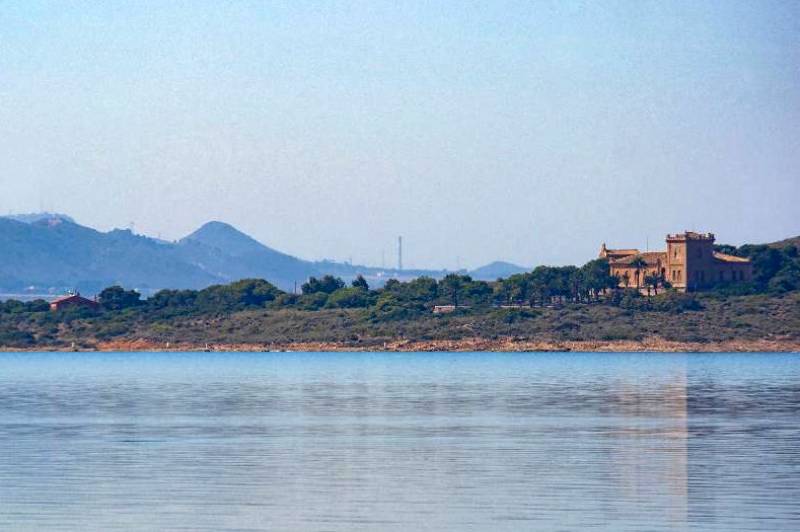
Image: San Javier tourist office
The Isla Mayor in the Mar Menor is also known as the Isla del Barón, after the Barón de Benifayó, an Italian nobleman who fell in love with the island while imprisoned there between 1867 and 1878 after killing a man in a duel.
He eventually bought the island and built a palace, where he threw lavish parties, and at one of these he fell hopelessly in love with a young Russian princess and asked for her hand in marriage. The girl’s impoverished family agreed to the proposal and she found herself bound in wedlock to a man she didn’t love, imprisoned on the island.
She started taking lonely walks down to the beach to stare at the sea, often completely naked, and the Baron was angered by the thought of fishermen seeing his bride without clothes. So, one evening, when she wandered down to the shore, he followed her and murdered her in rage. Her body was never found.
But ever since, fishermen have sighted the lonely figure of a naked woman walking along the shore, wailing with grief at having been forced to leave her native land to spend eternity on the lonely island.
7. The Palacio de Guevara in Lorca
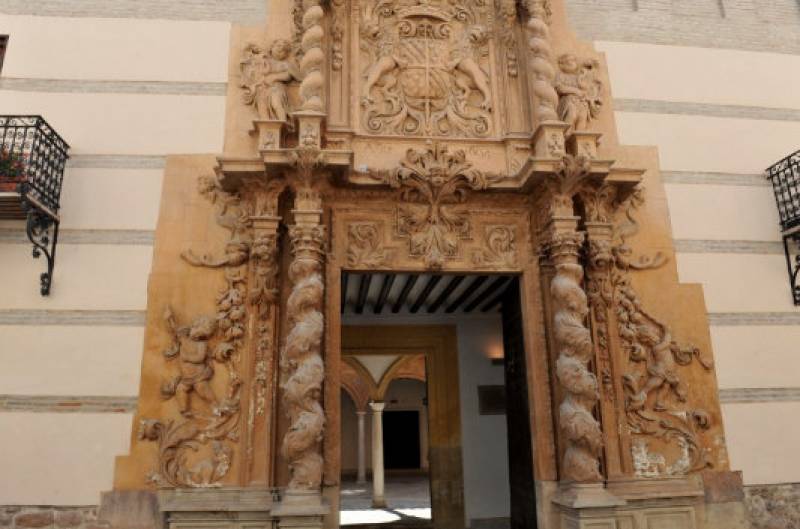 The Palacio de Guevara, sometimes known as the Casa de las Columnas, is the most representative baroque building in the historic city centre of Lorca and was officially recognized as an Item of Cultural Interest in 1984. Located alongside many other of the sumptuous residences occupied by the aristocracy of Lorca in the 18th and 19th centuries, it was among the first monuments to be renovated after the earthquakes in May 2011, and partly re-opened to the public in April 2013.
The Palacio de Guevara, sometimes known as the Casa de las Columnas, is the most representative baroque building in the historic city centre of Lorca and was officially recognized as an Item of Cultural Interest in 1984. Located alongside many other of the sumptuous residences occupied by the aristocracy of Lorca in the 18th and 19th centuries, it was among the first monuments to be renovated after the earthquakes in May 2011, and partly re-opened to the public in April 2013.
But the man who had it built, Juan de Guevara, was reportedly something of an eccentric tyrant, for example riding horses inside the palace, and it is said that every night his spirit reawakens and once again rides through the corridors. Those who have been in the abandoned rooms of the building since the earthquake report hearing the neighing of horses, the sounds of combat and even the distressed cries of children…
Members regularly return to their extended family at the La Quinta multi-ownership club within La Manga Club
Continuity, security and the constant drive to improve attract visitors back to La Quinta year after year
 The 5-star La Quinta in the heart of La Manga Club, the most prestigious sports resort development in the Costa Cálida, has forged a reputation over more than three decades as one of the finest multi-ownership members clubs in Europe, and is currently able to offer a limited number of new membership deals on both permanent and fixed 4-year term conditions.
The 5-star La Quinta in the heart of La Manga Club, the most prestigious sports resort development in the Costa Cálida, has forged a reputation over more than three decades as one of the finest multi-ownership members clubs in Europe, and is currently able to offer a limited number of new membership deals on both permanent and fixed 4-year term conditions.
Located in lush tropical gardens above the par-47 pitch and putt course of La Manga Club, La Quinta is within easy walking distance of the tennis centre and various shopping malls. The properties are luxury air-conditioned linked villas built in the traditional Andalusian style with views out across La Manga Club towards the Mar Menor, and those occupying them can enjoy the community’s saltwater swimming pool with swim-up pool bar, where drinks and snacks are served throughout the day.
La Quinta is also home to La Solana bar and restaurant, which is open to non-members for the superb breakfast and lunch menus!
 In short, to remain at the top in a resort which has on various occasions been named the best golf destination in Europe, La Quinta have worked hard to combine a number of factors in what has proved to be a winning formula, the most appreciated according to members’ opinions being the following:
In short, to remain at the top in a resort which has on various occasions been named the best golf destination in Europe, La Quinta have worked hard to combine a number of factors in what has proved to be a winning formula, the most appreciated according to members’ opinions being the following:
* Quinta Members return for their holidays
* Staff and Members are part of an extended family.
* Safety and security are given top priority.
* The weather is usually predictable and invariably better than at home!
* The standards both at La Quinta and throughout La Manga Club remain high.
* La Quinta always looks forward and tries to provide added interest every year!








